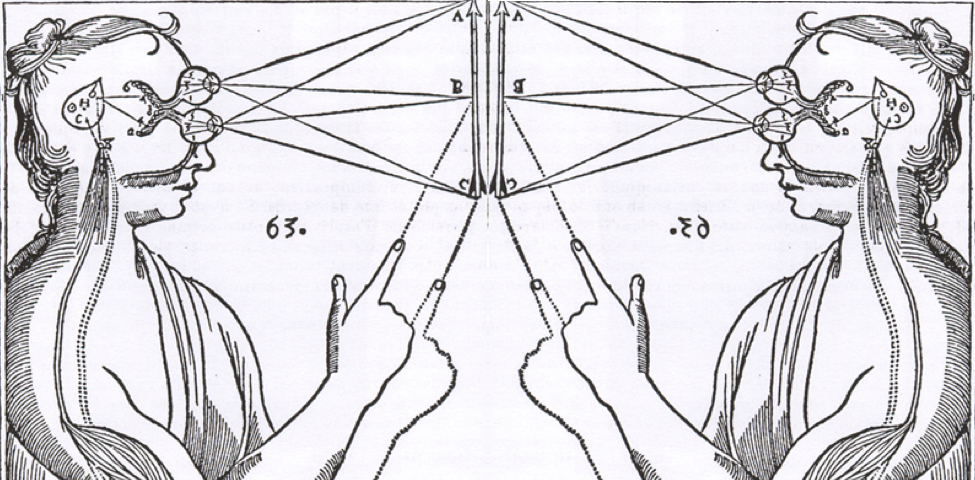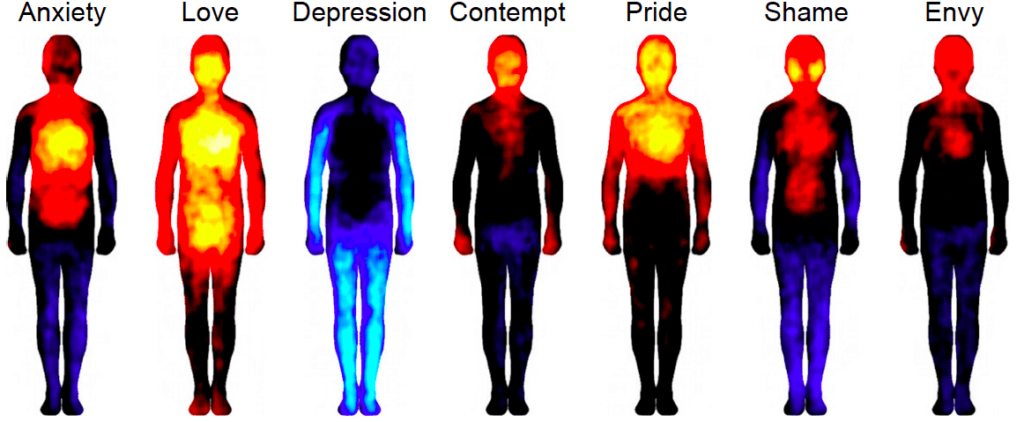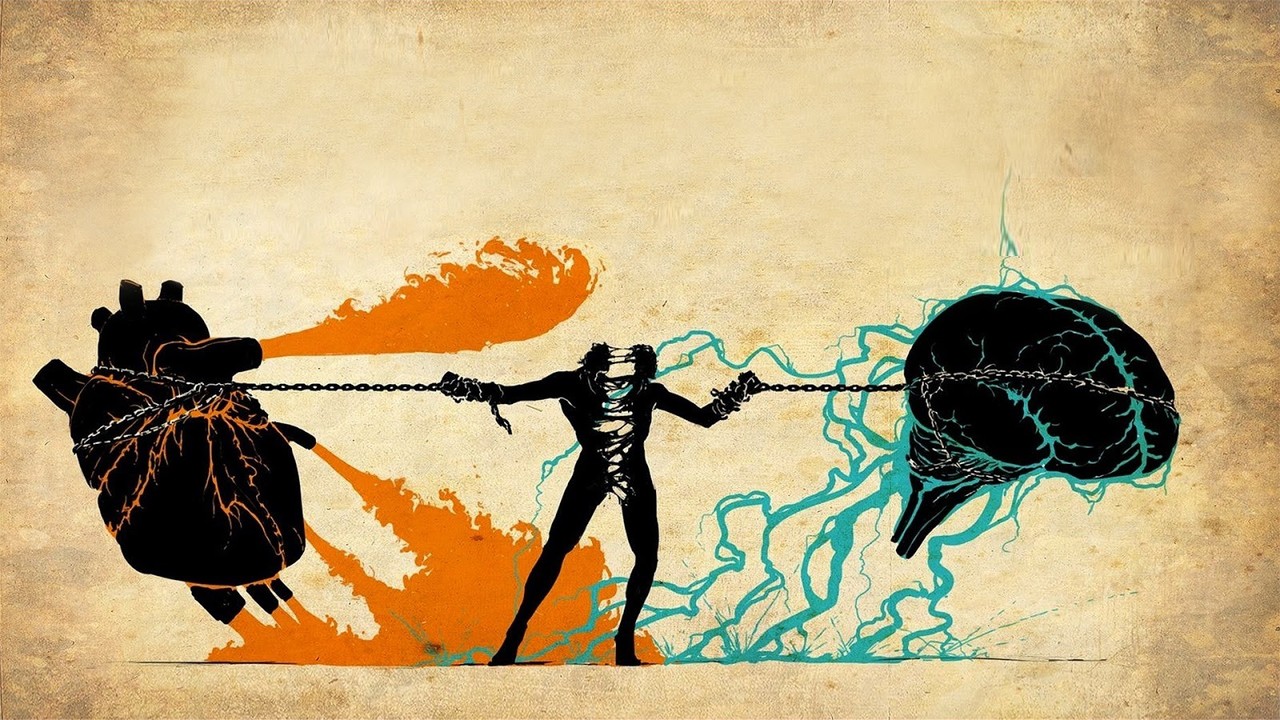By Stella Tsianta,
Since the beginning of time, long before scientists began shedding light on the matter of how emotions are linked with the body, an intuitive understanding of this link between the body and the feelings emerged and permeated our very language. We use the term “feeling sick”, “cold feet”, or “shiver down the spine” for both the sensory symptoms, such as fever or nausea and for psychological emotions, such as sadness and apathy. This understanding of the dialogue between the body and emotions was a known fact in ancient times. In their pre-medical, healing practices Ancient Greek, Roman, and Indian Ayurvedic physicians all enlisted the theory of the four touches of humor — blood, yellow bile, black bile, and phlegm —, believing that imbalances in these four visible secretions of the body caused disease and were themselves often caused by the emotions. Even in the English language, some emotions are engraved by these colors. For example, “melancholy” comes from the Latin words “melan” for “black”.
In the 17th century, fighting through the superstitions and providing the seed of rationalism in an era driven by religious wars, the French philosopher and mathematician, René Descartes, who laid the fundamentals of current scientific discoveries, severed the link between the emotions and the body. He thought that only what is visible and proven beyond doubt can be true, creating, unintentionally, a scientific taboo around the link between emotions and the body that lasted for the following four centuries. Hans Selye, an Austrian-Canadian physician, and physiologist, was the first to popularize the idea of stress in the 1950s, attracting scientific attention to the effects of stress on physical health and popularizing the concept throughout the world.

In recent years, Dr. Esther Sternberg has shed light on the invisible threads connecting the mind and the body. Her work consists greatly of the link between the nervous system and the immune system. Apparently, according to her research, memories of past experiences become encoded into triggers that cause stress. Reaction to stress is different for every human. Some may feel creative and motivated to act on a certain situation, while others may feel desperate and hopeless. This dichotomy of “good stress” vs. “bad stress” is determined by the dose and the duration of stress hormones. Also, she points out that young parents who have survived stressful and traumatic situations may subconsciously teach their children a common style of stress-responsiveness; but it is also possible that these automatic hormonal stress responses permanently changed the parents’ biology and were transmitted via DNA to their children. She explains further the neurobiological machinery behind this response in her work.
Furthermore, sometimes in our everyday lives, even if we are not familiarized with the science behind emotions, we can feel emotions in certain areas of the body. Body mapping might not be a concrete solution for everyone, but it provides a little bit of help to decipher these emotions. As a practice, it is limited so far, but researchers and spiritual workers are continuously gaining further data. These are the 13 emotions and the physical areas they activate (or do not engage) according to a 2014 study by statistician Enrico Glerean and his colleagues. Increased activity corresponds to warmer colors (red, orange, yellow) on a heat map, whereas decreasing reactions correspond to cooler colors (blue, green, and purple; blue, green, indigo). Researchers theorized that various emotions correspond to distinct bodily reactions in order to generate these body maps. They asked 701 participants to color in the areas of a body silhouette where they perceived increased or decreased activity as a response to varied stimuli. The strength of emotions was shown to be closely connected to the intensity of mental and physical experiences in a 2018 investigation by the same team. To put it another way, the greater the sensation in your body, the stronger the sensation in your mind.

In conclusion, the connection between the mind and the body is important for our well-being overall. In fact, ignoring, burying, or blocking emotions may contribute to more illnesses. For example, when the mind-body connection is weak, the possibilities of neglecting emotional and physical health are higher. In any way, consulting a professional is always a mandatory and extremely helpful step.
References
- Where Are Emotions Felt in the Body? This Infographic Will Tell You, greatist.com, Available here
- The Science of Stress and How Our Emotions Affect Our Susceptibility to Burnout and Disease, themarginalian.org, Available here




